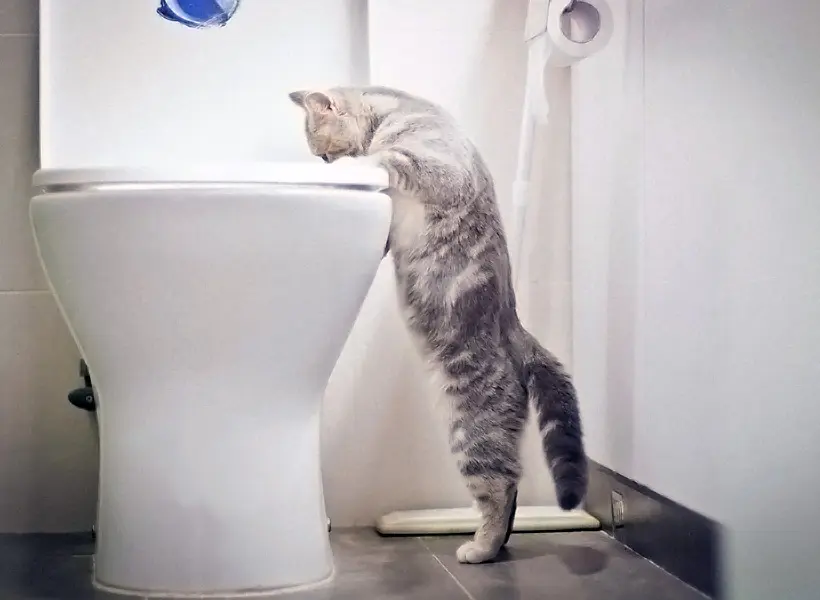Dangers of Flushing Cat Poop Down Your Toilet - Avoid Possible Issues
Dangers of Flushing Cat Poop Down Your Toilet - Avoid Possible Issues
Blog Article
Every person has his or her own piece of advice involving Can You Flush Cat Poo or Litter Down the Toilet?.

Introduction
As cat proprietors, it's important to bear in mind exactly how we deal with our feline buddies' waste. While it might appear convenient to flush pet cat poop down the toilet, this method can have damaging effects for both the environment and human health and wellness.
Alternatives to Flushing
The good news is, there are much safer and a lot more liable means to dispose of cat poop. Consider the following alternatives:
1. Scoop and Dispose in Trash
The most common method of getting rid of pet cat poop is to scoop it right into a naturally degradable bag and throw it in the trash. Make certain to make use of a specialized litter inside story and take care of the waste promptly.
2. Usage Biodegradable Litter
Select biodegradable pet cat trash made from products such as corn or wheat. These trashes are environmentally friendly and can be securely gotten rid of in the garbage.
3. Bury in the Yard
If you have a yard, take into consideration burying feline waste in a designated area far from vegetable gardens and water resources. Be sure to dig deep sufficient to stop contamination of groundwater.
4. Set Up a Pet Waste Disposal System
Buy a pet waste disposal system especially made for cat waste. These systems utilize enzymes to break down the waste, decreasing odor and ecological influence.
Health Risks
Along with environmental problems, purging feline waste can also present health and wellness risks to human beings. Pet cat feces might contain Toxoplasma gondii, a bloodsucker that can cause toxoplasmosis-- a possibly serious disease, specifically for expecting ladies and people with damaged body immune systems.
Environmental Impact
Flushing feline poop introduces unsafe pathogens and parasites into the water system, posturing a substantial risk to water ecological communities. These impurities can adversely influence aquatic life and compromise water quality.
Conclusion
Liable family pet possession expands past providing food and sanctuary-- it also includes correct waste management. By avoiding flushing pet cat poop down the commode and choosing alternate disposal techniques, we can lessen our ecological impact and shield human health.
Why Can’t I Flush Cat Poop?
It Spreads a Parasite
Cats are frequently infected with a parasite called toxoplasma gondii. The parasite causes an infection called toxoplasmosis. It is usually harmless to cats. The parasite only uses cat poop as a host for its eggs. Otherwise, the cat’s immune system usually keeps the infection at low enough levels to maintain its own health. But it does not stop the develop of eggs. These eggs are tiny and surprisingly tough. They may survive for a year before they begin to grow. But that’s the problem.
Our wastewater system is not designed to deal with toxoplasmosis eggs. Instead, most eggs will flush from your toilet into sewers and wastewater management plants. After the sewage is treated for many other harmful things in it, it is typically released into local rivers, lakes, or oceans. Here, the toxoplasmosis eggs can find new hosts, including starfish, crabs, otters, and many other wildlife. For many, this is a significant risk to their health. Toxoplasmosis can also end up infecting water sources that are important for agriculture, which means our deer, pigs, and sheep can get infected too.
Is There Risk to Humans?
There can be a risk to human life from flushing cat poop down the toilet. If you do so, the parasites from your cat’s poop can end up in shellfish, game animals, or livestock. If this meat is then served raw or undercooked, the people who eat it can get sick.
In fact, according to the CDC, 40 million people in the United States are infected with toxoplasma gondii. They get it from exposure to infected seafood, or from some kind of cat poop contamination, like drinking from a stream that is contaminated or touching anything that has come into contact with cat poop. That includes just cleaning a cat litter box.
Most people who get infected with these parasites will not develop any symptoms. However, for pregnant women or for those with compromised immune systems, the parasite can cause severe health problems.
How to Handle Cat Poop
The best way to handle cat poop is actually to clean the box more often. The eggs that the parasite sheds will not become active until one to five days after the cat poops. That means that if you clean daily, you’re much less likely to come into direct contact with infectious eggs.
That said, always dispose of cat poop in the garbage and not down the toilet. Wash your hands before and after you clean the litter box, and bring the bag of poop right outside to your garbage bins.
https://trenchlesssolutionsusa.com/why-cant-i-flush-cat-poop/

I discovered that entry on How to Dispose of Cat Poop and Litter Without Plastic Bags when browsing the internet. Sharing is nice. Helping others is fun. Thanks a lot for your time. Don't hesitate to stop by our blog back soon.
Course Detail Report this page